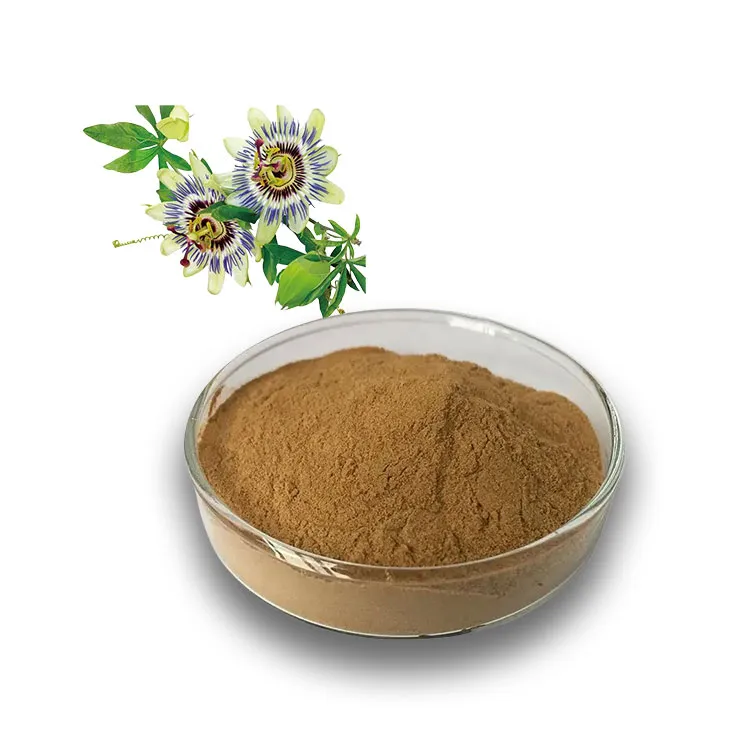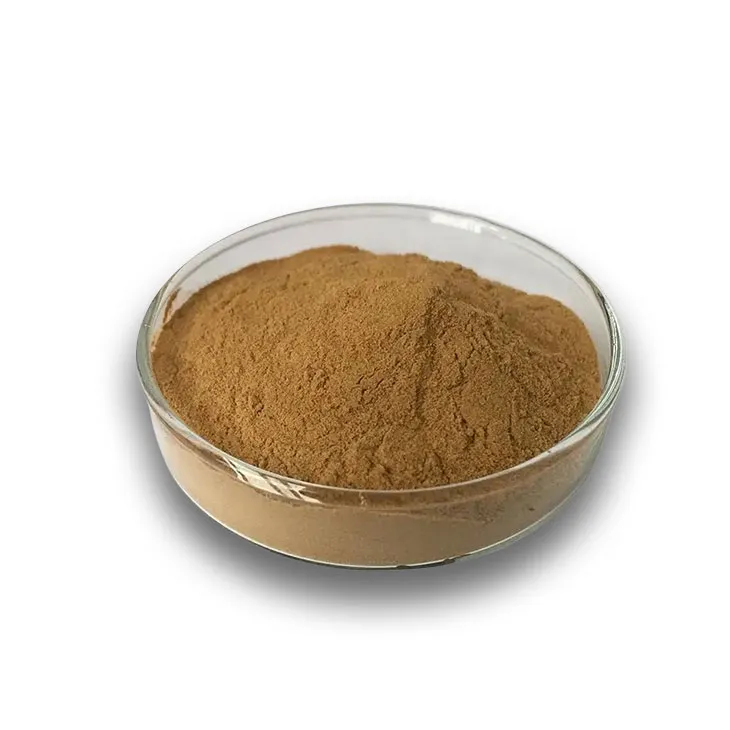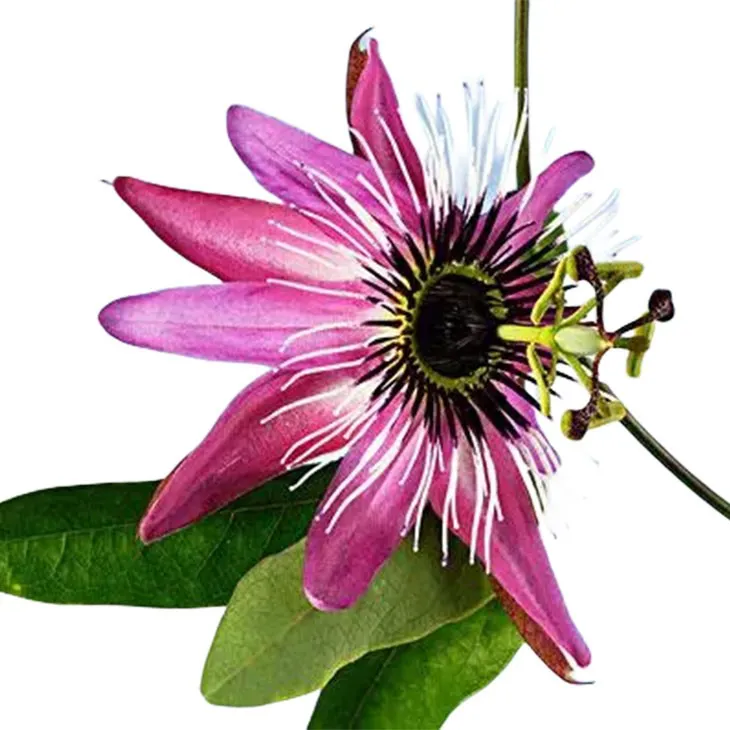- 0086-571-85302990
- sales@greenskybio.com
The process of extracting isovitexin from passionflower extract.
2024-11-29

1. Introduction to Isovitexin and Passionflower
Isovitexin is a flavonoid compound that has attracted significant attention in recent years due to its potential biological activities. It is found in various plants, and passionflower (Passiflora incarnata) is one of the notable sources. Passionflower has a long history of use in traditional medicine for its sedative, anxiolytic, and anti - spasmodic properties. The presence of isovitexin in Passionflower Extract may contribute to these beneficial effects, making its extraction and isolation an important area of study for applications in pharmaceuticals and nutraceuticals.

2. Collection of Passionflower
The first step in the extraction of isovitexin from passionflower is the proper collection of the plant material. This process is crucial as it affects the quality and quantity of the final extract.
2.1. Selection of the Right Time
Passionflower should be harvested at the appropriate stage of growth. Generally, it is best to collect the plant when it is in full bloom or just before the peak of flowering. At this time, the concentration of bioactive compounds, including isovitexin, is likely to be at its highest. For example, in some regions, passionflower is harvested during the summer months when the plant has reached its optimal growth and development.
2.2. Harvesting Method
The harvesting method also plays an important role. Hand - harvesting is often preferred to ensure that only the desired parts of the plant are collected. In the case of passionflower, the aerial parts, such as the leaves, flowers, and stems, are typically harvested. Care should be taken not to damage the plant during harvesting, as this can lead to the degradation of the bioactive compounds. After harvesting, the plant material should be quickly transported to the processing facility to minimize any loss of quality.

3. Pretreatment of Passionflower
Once the passionflower is collected, it needs to be pretreated before extraction. Pretreatment helps to remove impurities and prepare the plant material for more efficient extraction.
3.1. Cleaning
The passionflower material should be thoroughly cleaned to remove dirt, dust, and other contaminants. This can be done by gently washing the plant parts with clean water. After washing, the material should be dried completely. Air - drying is a common method, but care should be taken to ensure that the drying process is not too slow, as this may lead to the growth of mold or bacteria. Alternatively, low - temperature drying in a controlled environment can be used.
3.2. Grinding
After drying, the passionflower material is usually ground into a fine powder. Grinding increases the surface area of the plant material, which enhances the contact between the material and the extraction solvent during the extraction process. The powder should be of a consistent size to ensure uniform extraction. A grinder with an appropriate mesh size can be used to achieve the desired particle size.

4. Extraction of Isovitexin
The extraction of isovitexin from passionflower powder is a critical step in the process. There are several extraction techniques that can be used, with maceration and Soxhlet extraction being two of the most common methods.
4.1. Maceration
Maceration is a simple and traditional extraction method. In this process:
- The ground passionflower powder is placed in a suitable container.
- A solvent is added to the powder. Solvents such as ethanol, methanol, or water - ethanol mixtures are often used. The choice of solvent depends on the solubility of isovitexin and other factors. For example, ethanol is a popular solvent as it can dissolve a wide range of flavonoids, including isovitexin, and is relatively safe to handle.
- The mixture is then left to stand for a certain period of time, usually several hours to days. During this time, the solvent penetrates the plant material and extracts the isovitexin and other soluble compounds. Stirring the mixture occasionally can help to improve the extraction efficiency.
- After the maceration period, the mixture is filtered to separate the liquid extract (which contains isovitexin) from the solid plant residue.
4.2. Soxhlet Extraction
Soxhlet extraction is a more continuous and efficient extraction method compared to maceration. Here's how it works:
- The ground passionflower powder is placed in a Soxhlet thimble, which is then inserted into the Soxhlet apparatus.
- A suitable solvent is placed in the main chamber of the Soxhlet apparatus. Similar to maceration, solvents like ethanol or methanol can be used.
- The solvent is heated, and it vaporizes. The vapor rises and enters the condenser, where it is cooled and converted back into a liquid. This liquid then drips onto the passionflower powder in the thimble.
- The solvent extracts the isovitexin from the powder as it continuously cycles through the system. This process can continue for several hours, ensuring a more complete extraction compared to maceration.
- Finally, the extract is collected from the Soxhlet apparatus and can be further processed.

5. Concentration of the Extract
After extraction, the resulting extract usually contains a large amount of solvent. To obtain a more concentrated form of the extract containing isovitexin, concentration is necessary.
5.1. Rotary Evaporation
One of the most common methods for concentrating the extract is rotary evaporation. In this process:
- The extract is placed in a round - bottomed flask and connected to a rotary evaporator.
- The rotary evaporator operates under reduced pressure. As the flask rotates, the solvent is evaporated at a relatively low temperature, which helps to preserve the integrity of the isovitexin and other bioactive compounds.
- The evaporated solvent is condensed and collected, while the remaining liquid in the flask is the concentrated extract.
6. Purification of Isovitexin
Although the extract obtained after concentration contains isovitexin, it also contains other compounds. Purification is essential to isolate isovitexin in a pure form.
6.1. Chromatography Techniques
Chromatography is a powerful tool for purifying isovitexin. There are different types of chromatography that can be used, such as:
- Column Chromatography: In column chromatography, a column is filled with a stationary phase, such as silica gel or alumina. The concentrated extract is loaded onto the top of the column, and a mobile phase (a solvent or a solvent mixture) is passed through the column. Different compounds in the extract will have different affinities for the stationary and mobile phases, causing them to move through the column at different rates. Isovitexin can be selectively eluted from the column based on its unique properties, resulting in a purified fraction.
- High - Performance Liquid Chromatography (HPLC): HPLC is a more advanced and precise form of chromatography. It uses a high - pressure pump to force the mobile phase through a column filled with a fine - particle stationary phase. This allows for better separation of compounds. By adjusting the parameters such as the type of stationary phase, mobile phase composition, and flow rate, isovitexin can be effectively purified from the complex extract. HPLC is often used for the final purification step to obtain a highly pure form of isovitexin.
7. Characterization and Quality Control
Once the isovitexin is purified, it is important to characterize it and perform quality control to ensure its identity and purity.
7.1. Spectroscopic Techniques
Spectroscopic techniques are commonly used for characterization. For example:
- Ultraviolet - Visible (UV - Vis) Spectroscopy: Isovitexin has characteristic absorption peaks in the UV - Vis region. By measuring the absorption spectrum of the purified compound, it can be identified and its concentration can be determined. The absorption peaks can also provide information about the purity of the isovitexin sample.
- Nuclear Magnetic Resonance (NMR) Spectroscopy: NMR spectroscopy can provide detailed structural information about isovitexin. It can be used to confirm the chemical structure of the compound and to detect any impurities or structural modifications.
7.2. Quality Control
Quality control involves several aspects:
- Purity assessment: The purity of the isovitexin should be determined using methods such as HPLC and compared to established standards.
- Impurity detection: Any potential impurities, such as residual solvents or other flavonoids, should be detected and quantified. The levels of these impurities should be within acceptable limits.
- Stability testing: The stability of isovitexin under different storage conditions should be evaluated to ensure that it retains its biological activity over time.
8. Conclusion
The process of extracting isovitexin from Passionflower Extract is a multi - step and complex procedure. From the collection of passionflower to the final purification and quality control of isovitexin, each step requires careful attention to detail. Understanding and optimizing this process is crucial for the successful development of pharmaceuticals and nutraceuticals containing isovitexin. With further research, the potential applications of isovitexin in promoting health and treating various diseases can be fully explored.
FAQ:
What are the suitable solvents for the extraction of isovitexin from Passionflower Extract?
Commonly used solvents for this extraction include ethanol, methanol, or a mixture of polar solvents. These solvents are effective in dissolving the components from the passionflower extract, facilitating the extraction of isovitexin. However, the choice of solvent may also depend on factors such as the extraction method used and the desired purity of the final product.
Why is chromatography used for the purification of isovitexin?
Chromatography is used for purification because it can separate isovitexin from other components in the passionflower extract based on differences in their physical and chemical properties. For example, in column chromatography, different compounds interact differently with the stationary phase and the mobile phase, allowing for the isolation of isovitexin with a high degree of purity.
What are the potential applications of isovitexin in pharmaceuticals?
Isovitexin has shown potential in pharmaceuticals. It may have antioxidant, anti - inflammatory, and neuroprotective properties. For example, its antioxidant activity can help in combating oxidative stress - related diseases. Additionally, its anti - inflammatory effects could be beneficial in treating inflammatory disorders, and its neuroprotective properties may be useful in neurodegenerative diseases.
How does the quality of passionflower affect the extraction of isovitexin?
The quality of passionflower is crucial. High - quality passionflower with a good content of isovitexin - related compounds will result in a more efficient extraction. Factors such as the species of passionflower, its growth conditions (including soil quality, climate, and cultivation methods), and the time of harvest can all influence the amount and quality of isovitexin present in the plant, thereby affecting the extraction yield and quality.
Are there any alternative extraction methods for isovitexin from passionflower extract?
Yes, apart from maceration and Soxhlet extraction, there are other methods such as supercritical fluid extraction. Supercritical fluid extraction uses a supercritical fluid (usually carbon dioxide) as the solvent. It has the advantages of being more environmentally friendly, having a lower extraction temperature (which can preserve the thermally labile components), and potentially providing a higher purity product compared to traditional extraction methods.
Related literature
- Isovitexin: A Review of Its Phytochemistry, Pharmacology, and Analytical Methods"
- "Extraction and Characterization of Isovitexin from Passionflower: Recent Advances"
- "The Role of Isovitexin in Nutraceutical and Pharmaceutical Applications: A Comprehensive Study"
- ▶ Hesperidin
- ▶ Citrus Bioflavonoids
- ▶ Plant Extract
- ▶ lycopene
- ▶ Diosmin
- ▶ Grape seed extract
- ▶ Sea buckthorn Juice Powder
- ▶ Fruit Juice Powder
- ▶ Hops Extract
- ▶ Artichoke Extract
- ▶ Mushroom extract
- ▶ Astaxanthin
- ▶ Green Tea Extract
- ▶ Curcumin
- ▶ Horse Chestnut Extract
- ▶ Other Product
- ▶ Boswellia Serrata Extract
- ▶ Resveratrol
- ▶ Marigold Extract
- ▶ Grape Leaf Extract
- ▶ New Product
- ▶ Aminolevulinic acid
- ▶ Cranberry Extract
- ▶ Red Yeast Rice
- ▶ Red Wine Extract
-
Senna Leaf Extract
2024-11-29
-
Centella Asiatica Extract
2024-11-29
-
Konjac Powder
2024-11-29
-
Epimedium extract powder
2024-11-29
-
Berberis aristata Extract
2024-11-29
-
Chasteberry Extract
2024-11-29
-
Thunder God Vine Extract
2024-11-29
-
Sophora Japonica Flower Extract
2024-11-29
-
Cactus Extract
2024-11-29
-
Coix Seed Extract
2024-11-29





















